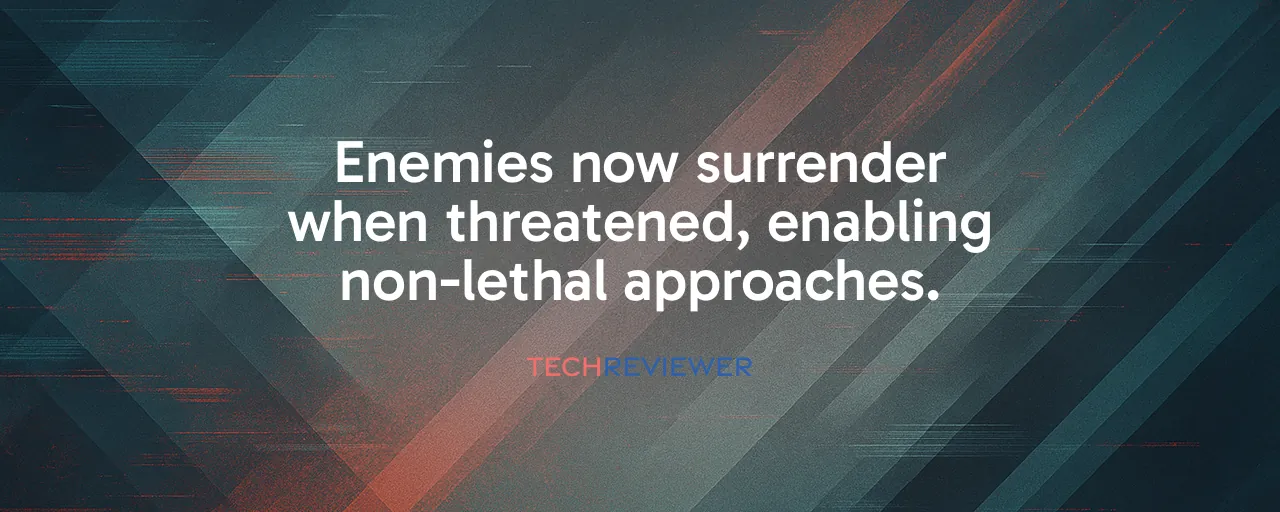Reactive AI Shifts Combat Dynamics
Techland rolled out the 1.3 patch for Dying Light: The Beast on October 30, 2025, six weeks after the game's September launch. Players now see human enemies with melee weapons lay down their weapons and surrender when a firearm points their way. This change stems directly from community requests for more world reactivity, a core element Techland has emphasized since the original Dying Light in 2015.
The mechanic works through probability. Enemies assess the threat and choose to fight or yield, leading to different outcomes based on what players do next. Some keep their distance to avoid escalation, while others test aggressive approaches. This setup builds on the franchise's focus on player agency, refined across Dying Light 2 in 2022.
Early reports from the player base highlight varied experiences. One group appreciates the option for non-lethal paths in dense urban fights. Another points out potential exploits, like using guns to clear areas without ammo costs. Techland designed the system with branching possibilities to keep interactions fresh.
Animations and Community Challenges Drive Engagement
The update includes nine fresh execution animations, one for each melee weapon type. These additions reduce repetition in close-quarters kills, a common complaint in long sessions. Visual variety matters in survival games where combat loops dominate playtime.
Call of the Beast challenges continue with new goals. The community must hit 10 million shots collectively for The Marksman reward and 20 million for the Bullseye reward. This phase runs until November 6, 2025. Such events tap into shared progress, similar to structures in other live-service titles.
A crossover with PUBG Mobile begins October 31, 2025. Players activate a quest via the Dying Light Outpost, complete in-game tasks, and earn themed items. This partnership links two distinct audiences, extending reach beyond the core survival horror crowd.
Bug Fixes Target Progression and Performance
Progression issues take center stage in the fixes. Blocks in quests like 'Precious Cargo' and 'Chain Reaction' are resolved, ensuring smooth advancement. Co-op mode sees corrections for respawn errors and AI despawning, critical for group play.
Stability improvements address crashes across platforms and FPS drops in multiplayer. Visual tweaks fix lighting artifacts, animation glitches, and texture streaming. UI on 4K displays responds better, and audio syncs properly in key scenes.
Balancing adjusts resource scarcity. Oxidizer loot increases, wiring costs for upgrades drop, and late-game vendors stock more parts. Survivors in encounters withstand more damage, easing random events.
Lessons From Past Updates and Player Data
Compare this to Dying Light 2's patch cycle, where major updates arrived every 6-8 weeks. Techland applied similar timing here, stabilizing the game post its 1.5 million unit sales in the first week. Steam accounted for 56 percent of that, with strong numbers from China at 24 percent of players.
Dying Light 2 faced criticism for NPC behavior and pacing. The Beast rebuilds human AI with better pathfinding, drawing from those lessons. Volatile changes improve chase tension without overhauling the day-night cycle that defined the 2015 original.
Player retention shows 9.7 average hours in the launch window. Non-lethal options like surrender could push that higher for those seeking varied runs. Finite animations, even with nine added, might still wear thin over hundreds of encounters.
Broader Impacts on Gameplay and Support
These changes reinforce iterative support. The gore system expands with more wound tracking and variants, leveraging modern hardware. Parkour feels fluid, blending original grounded moves with Dying Light 2's ledge detection.
Cross-platform play remains stable, though progression doesn't carry over fully between PC and consoles. The roadmap hints at more events, building on Call of the Beast's model.
Overall, patch 1.3 refines core systems while responding to feedback. It keeps the game viable months in, with 89.1 percent positive Steam reviews at launch as a foundation.
